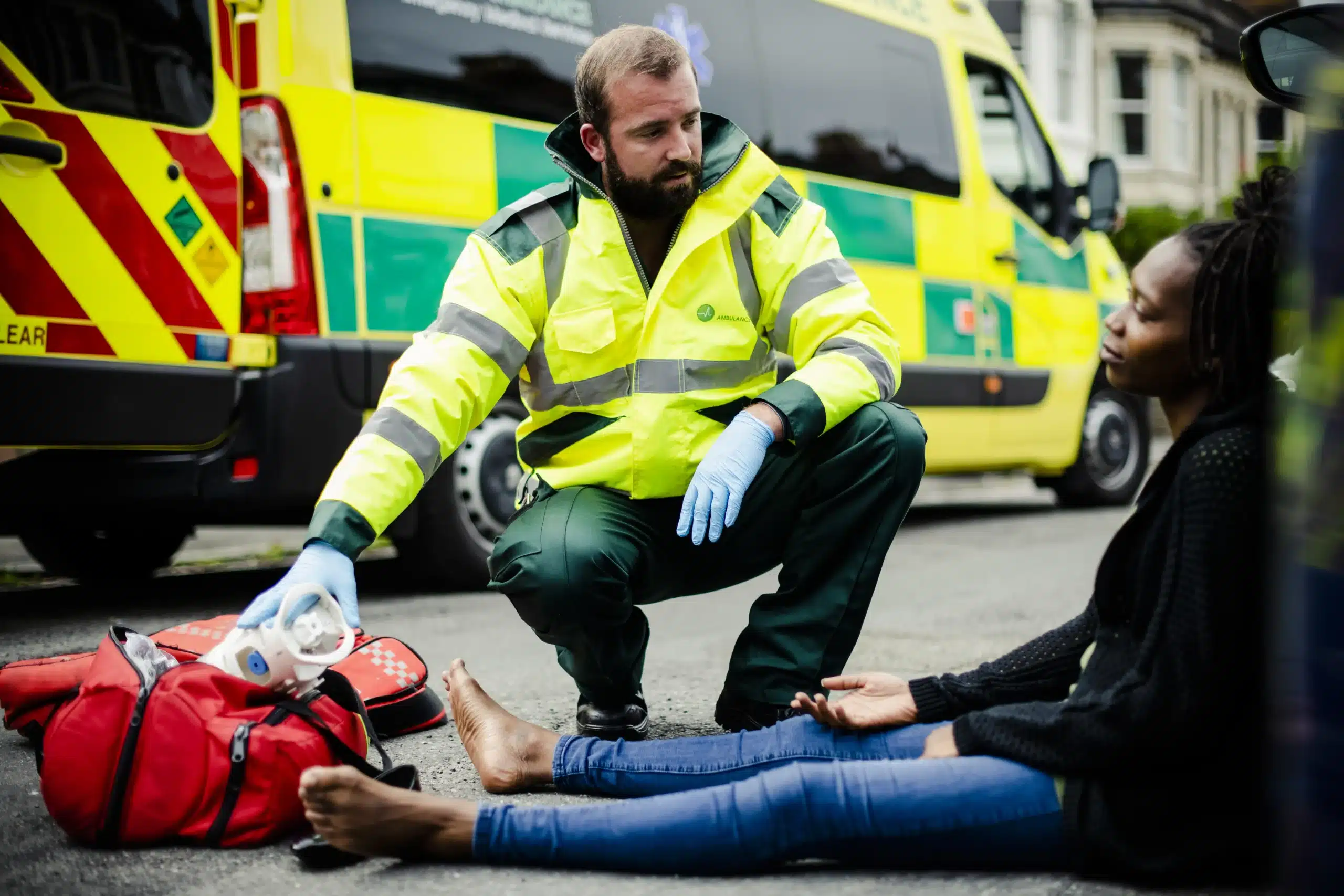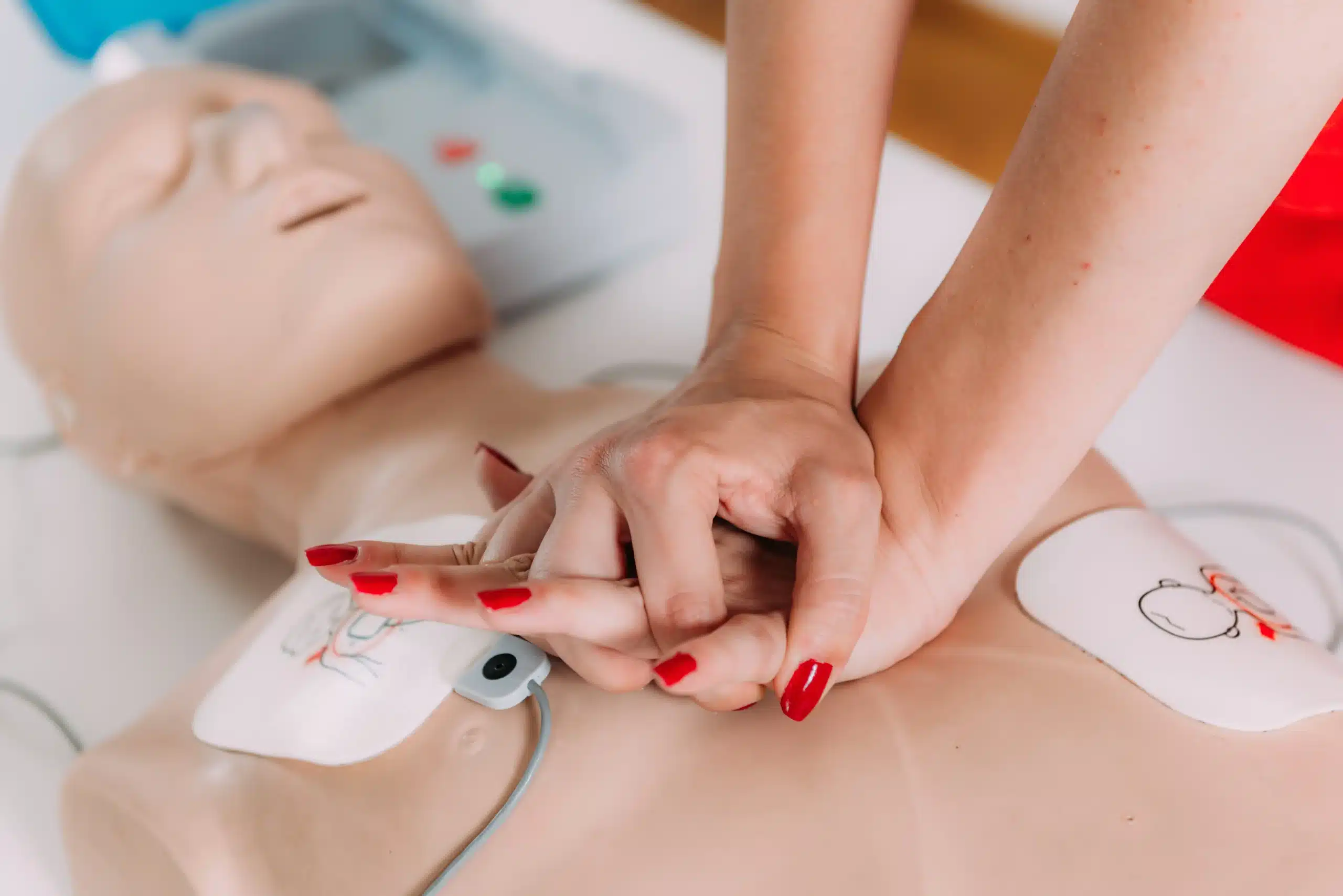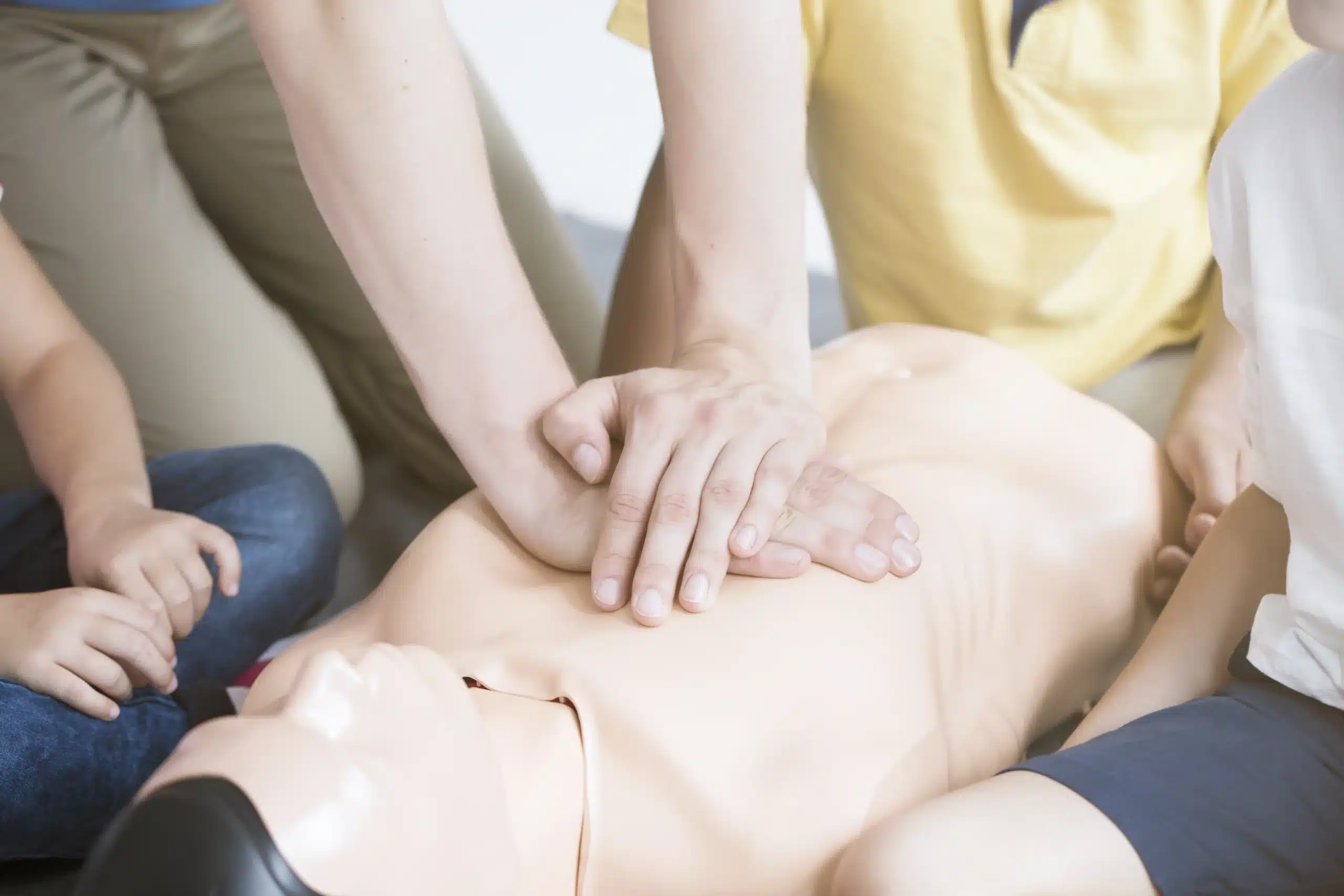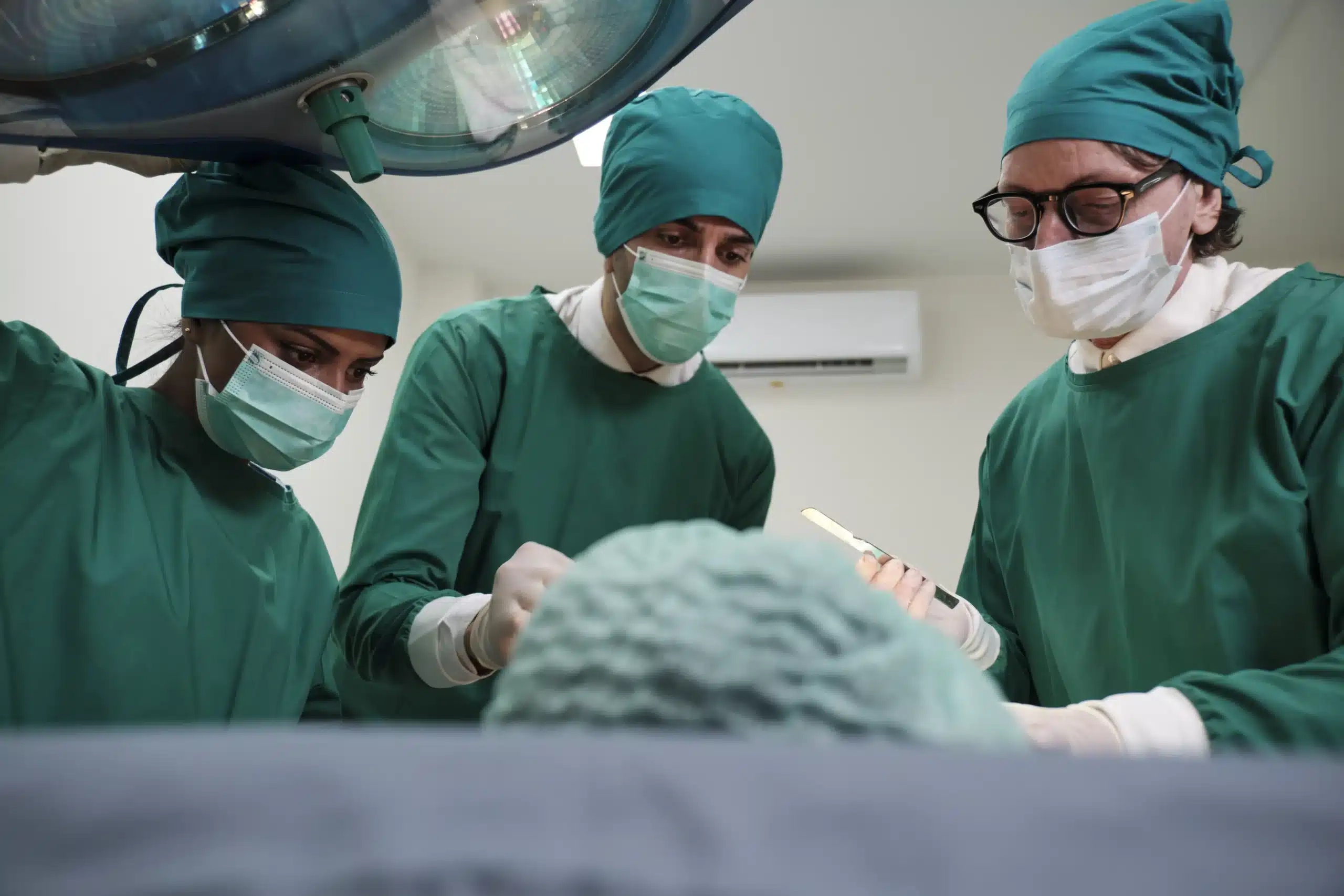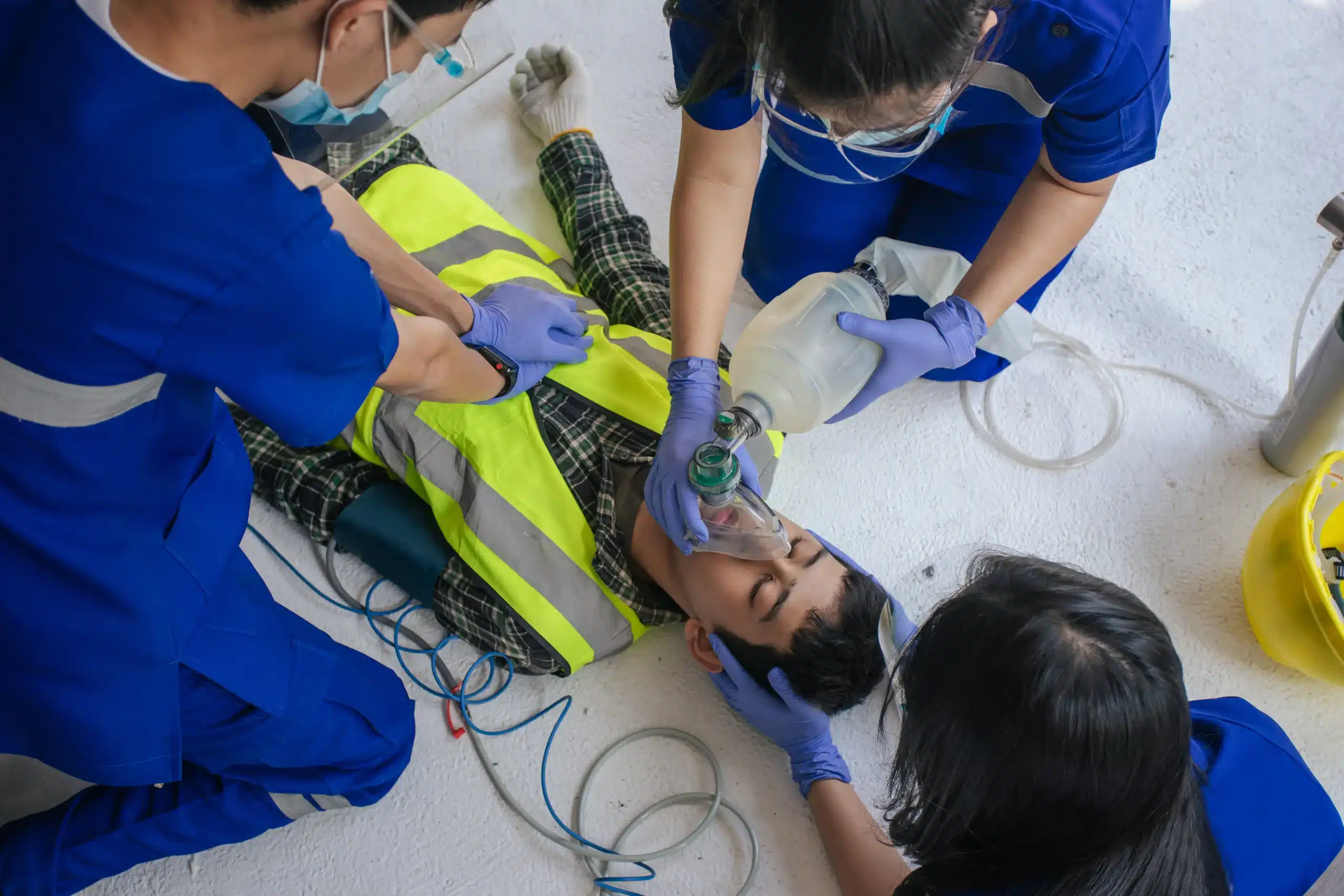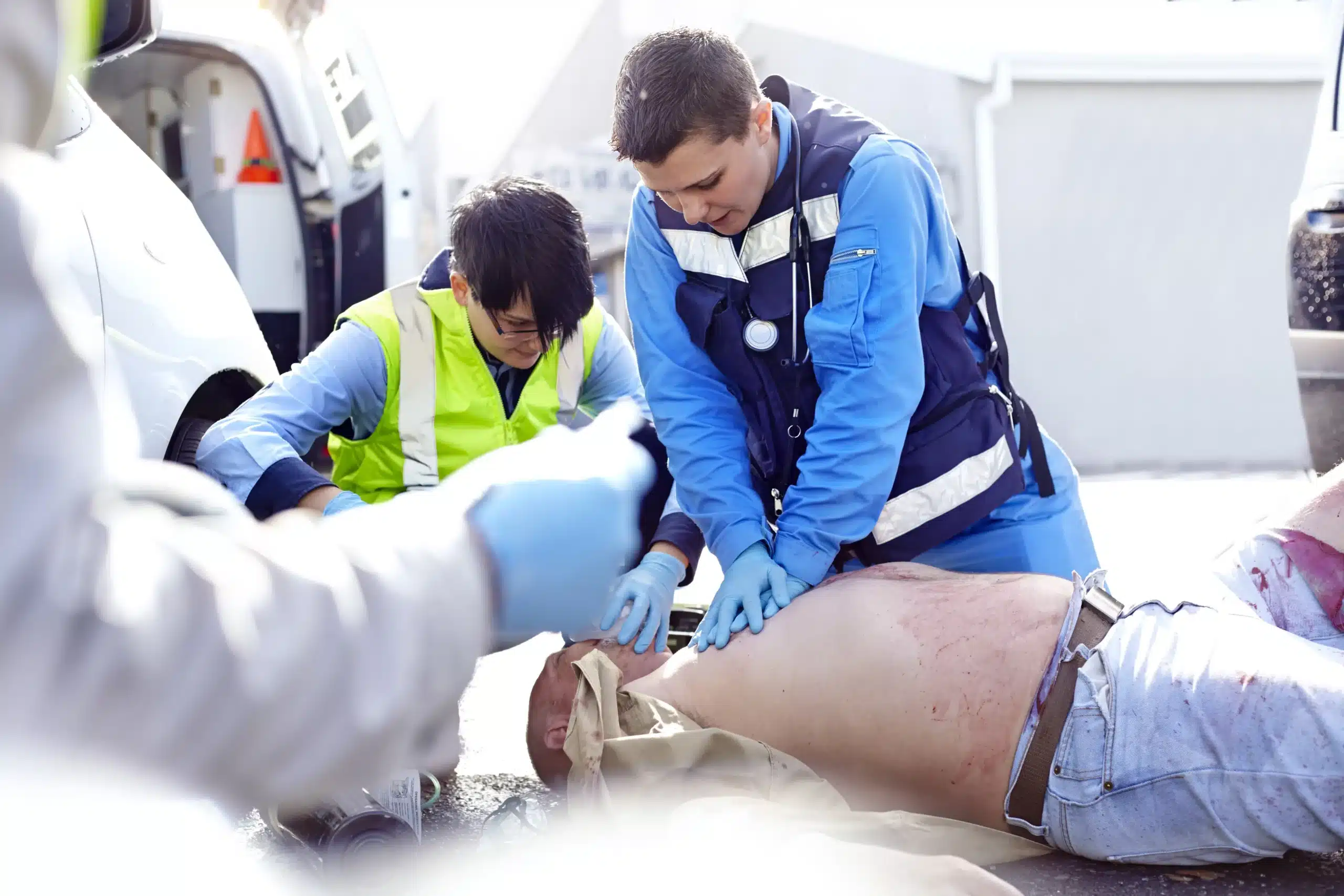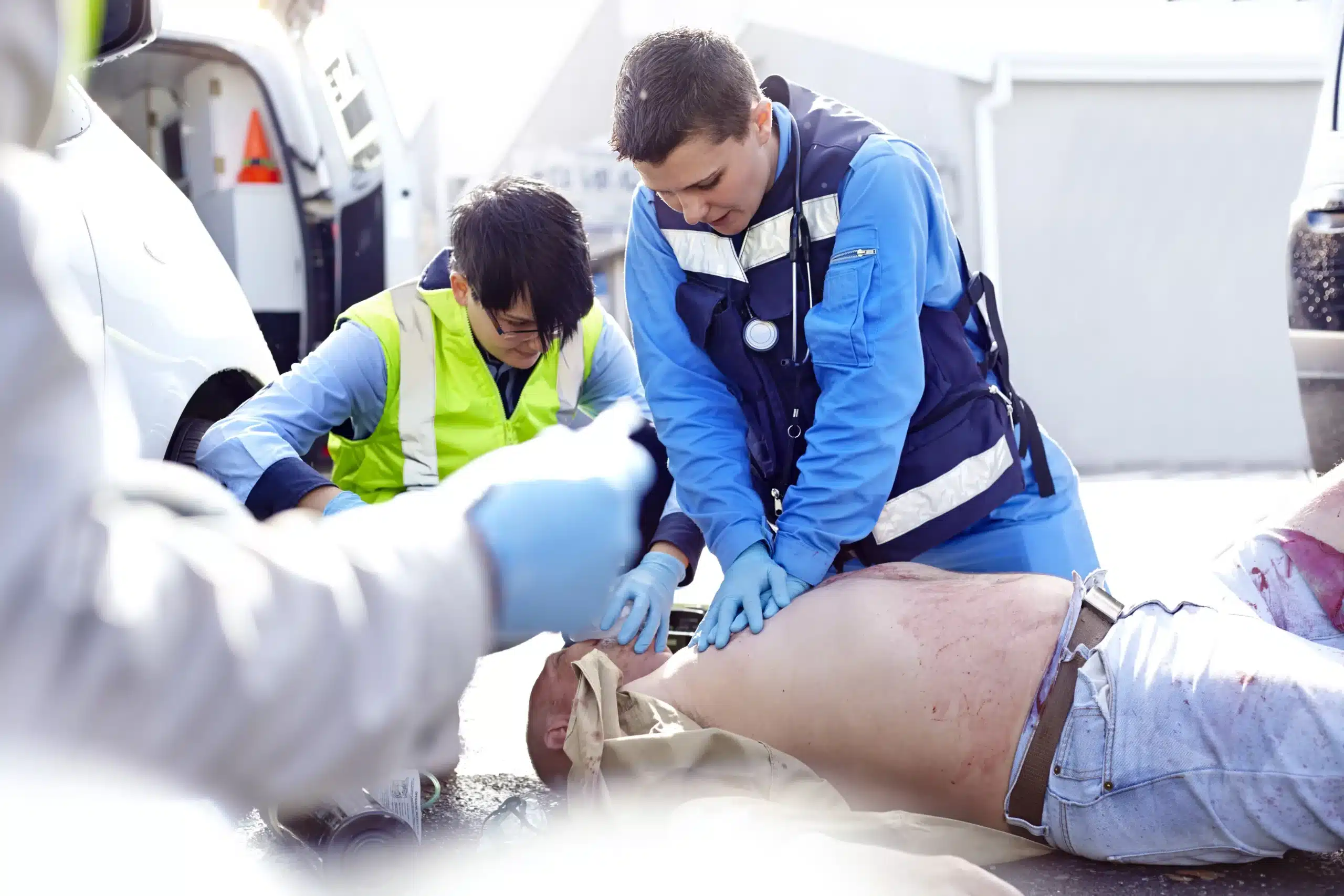Emergencies happen, and knowing how to respond effectively can change outcomes. BLS certification empowers you to act quickly and confidently in critical situations, providing essential care until professional help arrives. If you’re in Hayward and considering taking the leap into BLS training, this guide is for you. We’ll cover everything from the basics of BLS courses in Hayward to the different certification options available. Whether you’re a healthcare provider or someone who wants to be prepared for any situation, we’ll help you find the right course to fit your needs and empower you to make a difference.
Key Takeaways
- BLS certification equips you with life-saving skills: From CPR and AED use to relieving choking, BLS training empowers you to respond effectively in emergencies, at home, at work, or in your community. Find a course that fits your lifestyle and learning preferences.
- Selecting the right BLS course involves several factors: Consider your current skill level, career goals, and preferred learning format (in-person, blended, or online). Compare providers, check their certifications (AHA or Red Cross), and look for flexible scheduling options.
- Maintaining your BLS skills is an ongoing process: Recertify every two years to stay up-to-date with the latest guidelines and practice regularly to keep your skills sharp. This continuous learning ensures you’re always ready to assist in a medical crisis.
What is BLS & Why is it Important?
Basic Life Support (BLS) certification gives you the skills to respond to life-threatening emergencies. These skills include CPR, using an AED (automated external defibrillator), and relieving choking in both adults and children. BLS training is crucial for anyone who might encounter a medical emergency, providing the knowledge and confidence to act quickly and potentially save a life. Think of it as equipping yourself with a vital toolkit for responding effectively in critical situations. This training goes beyond basic first aid, focusing on the immediate actions needed to stabilize someone experiencing cardiac arrest, respiratory distress, or choking. It emphasizes early intervention and the crucial steps to take before professional medical help arrives.
Common BLS Training Misconceptions
Several myths surrounding BLS training can discourage people from getting certified. Some believe it’s only for doctors and nurses, or that it’s too time-consuming. Others think that CPR training is enough. Let’s clear this up: BLS training benefits everyone. It covers essential skills like using an AED and helping someone who is choking, which standard CPR training may not include. BLS certification builds on basic CPR to provide a more comprehensive understanding of emergency response. Common misconceptions about BLS often underestimate its value and overestimate the time commitment involved. In reality, BLS courses are designed to be accessible and efficient, empowering individuals with life-saving skills without demanding excessive time.
Real-World BLS Applications
Right here in Hayward, California, American Heart Association BLS CPR classes play a vital role in empowering people to handle cardiac emergencies. The interest in these classes reflects our city’s commitment to community safety and well-being. By taking BLS training, Hayward residents improve their own skills and contribute to a safer environment. Think about the peace of mind that comes with knowing you can assist a loved one, a colleague, or even a stranger in a critical situation. BLS training empowers you to make a real difference. From schools and workplaces to community centers and homes, the applications of BLS are widespread, making it a valuable asset for anyone in any setting.
Find Top BLS Course Providers in Hayward
Finding the right BLS course provider is crucial for a positive and effective learning experience. Here are a few reputable options in Hayward:
Hayward CPR Classes
Hayward CPR Classes offers American Heart Association (AHA) BLS CPR classes, equipping individuals with essential life-saving skills. These courses cater to both healthcare professionals and the general public, providing comprehensive training for various emergencies. As a woman-owned AHA Training Center, they offer daily classes and guarantee the lowest prices in Alameda County. They serve Hayward, Union City, and San Leandro. You can also find information on their website about group discounts and other courses like RQI. Need to get in touch? Visit their contact page.
American Red Cross
The American Red Cross is a nationally recognized organization that provides BLS certification courses essential for various professions, including healthcare, firefighting, and law enforcement. Their training emphasizes high-quality CPR and the use of an Automated External Defibrillator (AED).
Hayward Emergency & Health Training Center
The Hayward Emergency & Health Training Center offers a range of CPR and emergency medical training courses. They categorize their offerings into Medical/Dental, Non-Medical, and Blended Learning formats, allowing participants to choose a course that best suits their needs.
Other Local Providers
Beyond these established providers, other local options exist. For example, Safety Training Seminars offers AHA-certified BLS, ACLS, PALS, and CPR/First Aid classes in Hayward. They offer flexible scheduling with daily classes and on-site training for groups, along with group discounts. Exploring these various providers will help you find the best fit for your schedule, budget, and learning style.
What to Expect in a BLS Course
This section covers the key components of a BLS course, from the hands-on training you’ll receive to how you get your certification. Understanding these elements will help you feel prepared and confident going into your training.
Course Content & Hands-on Training
BLS courses cover core life-saving techniques. You’ll learn high-quality CPR for adults, children, and infants, including how to recognize and respond to life-threatening emergencies like cardiac arrest. The training also emphasizes the importance of teamwork and clear communication during medical crises. Hands-on practice with an AED is a crucial part of the curriculum, ensuring you’re comfortable using this device in real-world scenarios. Hayward CPR Classes offers comprehensive BLS courses covering these essential skills.
Certification Process & Validity
After completing the course and passing the required exams, you’ll receive an American Heart Association BLS certification card. This credential is widely accepted in healthcare settings and other professional environments. Your BLS CPR card is valid for two years. To maintain your skills and keep your certification current, you’ll need to retake the course before it expires. Staying up-to-date with your BLS training ensures you’re always ready to provide effective assistance in emergencies. For more details on BLS certification, visit the American Heart Association website.
Compare BLS Course Formats in Hayward
Choosing the right BLS course format depends on your learning style, schedule, and budget. Hayward offers a variety of options, each with its own advantages. Let’s break down the differences between in-person, blended learning, and online-only courses.
In-Person Training
In-person BLS training offers the most immersive learning experience. You’ll learn alongside other students and receive immediate feedback from a certified instructor. This format emphasizes hands-on practice and allows you to ask questions and clarify any doubts in real-time. The direct interaction with an instructor and peers creates a supportive learning environment ideal for mastering essential CPR techniques and building confidence using an AED in emergencies. Hayward CPR Classes offers in-person training for those seeking this traditional, hands-on approach.
Blended Learning
Blended learning combines online convenience with the benefits of in-person skills practice. You’ll work through the course material at your own pace online, then attend a shorter in-person session to demonstrate your skills and receive instructor feedback. This format is particularly popular for healthcare professionals seeking a flexible yet thorough approach to BLS certification. The American Heart Association’s RQI program is a prime example of blended learning, offering a streamlined path to certification.
Online-Only Courses
Online-only BLS courses offer maximum flexibility and convenience. You can complete the coursework anytime, anywhere, making it ideal for busy individuals or those with limited access to in-person training centers. While online courses may lack the hands-on element of in-person training, they still provide comprehensive instruction on BLS principles and techniques. However, it’s important to note that some employers or regulatory bodies may require in-person skills verification, even with an online course. This format can be a good option for those needing a refresher or who prefer self-paced learning.
BLS Course Costs & Schedules in Hayward
Finding the right BLS course often involves balancing cost, convenience, and quality. Let’s break down the typical price ranges and scheduling options you’ll find in Hayward.
Average Prices & Group Discounts
BLS certification courses in Hayward come at various price points, typically influenced by the training center, the course format (in-person, blended, or online), and whether it’s an initial certification or a renewal. You might find Basic Life Support (BLS) certification for around $70, while a Pediatric Advanced Life Support (PALS) renewal could be closer to $190. Online BLS courses sometimes offer lower prices, potentially around $63, with combined CPR/First Aid courses online for approximately $65. For businesses or groups, many providers, like Hayward CPR Classes, offer discounted rates for group training, making it a cost-effective way to train your team. Check with individual providers like Hayward Emergency & Health Training Center for their specific pricing information.
Course Duration & Flexible Scheduling
Most BLS certification courses in Hayward require around four to five hours of your time. However, some expedited courses cater to those already comfortable with the material, condensing the training into as little as two hours. Many training centers understand busy schedules and offer classes daily, often with flexible scheduling options. Some providers will even conduct group training sessions at your preferred location, minimizing disruption to your workflow. The American Heart Association’s RQI program is a popular choice for healthcare providers in Hayward, offering a streamlined and efficient path to BLS certification. You can also explore options like Bay Area CPR for additional scheduling details.
Instructor Qualifications & Course Quality
Choosing the right instructor is key to a positive learning experience. It helps you grasp the techniques correctly and builds your confidence in using them.
Instructor Certification Requirements
Look for courses accredited by a recognized organization like the American Heart Association. This accreditation confirms instructors have completed rigorous training and stay current on the latest life-saving practices. As Illinois Safety points out, an instructor’s qualifications significantly impact your learning, whether you’re taking Basic Life Support (BLS), ACLS, PALS, or other similar courses. A well-trained instructor can make all the difference in how well you understand and retain the material. Choosing a certified instructor ensures they meet established standards and possess the necessary expertise.
Student Feedback & Course Effectiveness
A course’s effectiveness often shows in past participant feedback. Positive reviews mentioning confidence in applying learned skills are a great sign. For example, the American Heart Association often gathers student feedback demonstrating how courses build confidence in using life-saving skills. Beyond individual stories, research also supports the importance of effective instruction. One study showed a shortened instructor course successfully prepared participants to teach BLS. This highlights how a well-structured training program produces positive outcomes. Another study demonstrated that peer feedback, using video review, was just as effective as standard instructor feedback for improving BLS performance. This emphasizes the value of diverse and effective teaching methods in developing these crucial skills. Look for programs that incorporate varied teaching approaches and encourage student interaction for a richer learning experience.
Choose the Right BLS Course
Picking the right BLS course depends on a few key factors: your current skill level, career goals, and learning style. Let’s break down the different types of BLS courses so you can find the perfect fit.
Healthcare Provider vs. Layperson Courses
BLS courses are designed for different audiences. Healthcare providers, like doctors, nurses, and EMTs, need a comprehensive BLS course covering advanced techniques like AED use, airway management, and assisting with choking. These in-depth courses are crucial for professionals responding to emergencies in clinical settings. If you’re not a healthcare professional but want to learn essential lifesaving skills, a layperson course focusing on CPR and basic first aid might be more suitable. These courses empower you to handle emergencies at home or in your community.
Initial Certification vs. Renewal
Your BLS certification journey depends on whether you’re getting certified for the first time or renewing. Initial certification courses provide a foundational understanding of BLS principles and techniques. If your certification is expiring, a renewal course is what you need. Renewal courses refresh your knowledge and skills, keeping you up-to-date with the latest guidelines. Hayward CPR Classes offers both initial and renewal courses.
Specialized BLS Training
Beyond the core BLS curriculum, you might consider specialized training based on your interests or profession. For example, if you work in childcare, a course covering pediatric BLS would be helpful. Hayward CPR Classes offers various AHA certifications, including BLS, ACLS, PALS, and CPR. They also offer specialized training like RQI classes. Exploring these specialized options can enhance your skill set and make you a more effective responder in emergencies.
Prepare for Your BLS Course
Getting ready for your BLS course can make a big difference in how well you absorb the information and perform the skills. A little preparation goes a long way!
Pre-course Materials & What to Bring
The best BLS providers, like Hayward CPR Classes, often offer resources to help you prepare. Many providers use the American Heart Association’s RQI (Resuscitation Quality Improvement) program, a popular way for medical professionals in Hayward to get their BLS, ACLS, and PALS certifications. Check if your chosen provider offers online materials, such as videos, to review key concepts and techniques before class. Familiarizing yourself with the basics beforehand can significantly improve your understanding during the actual training. While there aren’t typically required materials to bring, comfortable clothing is recommended for the hands-on portions of the course.
Tips for Success & Learning
Watching any pre-course videos your provider offers can significantly increase your chances of success. Some studies suggest it can improve your likelihood of passing the skills test by about 50%. The physical aspect of CPR training can be demanding, so assess your physical abilities beforehand. If you have any physical limitations, talk to your provider. Rescheduling is usually an option without penalty. Finally, think about why you’re pursuing BLS certification. If you’re in healthcare, a related field, or simply want to be equipped to handle medical emergencies, BLS training provides valuable, potentially life-saving skills. You can learn more about who benefits from getting BLS certified from resources like the Red Cross. Going into your course with a clear understanding of its importance will help you stay focused and motivated.
Maintain Your BLS Certification
Keeping your BLS skills sharp is crucial for providing effective care during emergencies. This section covers how to renew your certification and stay up-to-date with the latest life-saving practices.
Renewal Process & Timeframes
BLS certification is typically valid for two years. After this period, you’ll need to take a recertification course to maintain your credentials and demonstrate continued competency. Many organizations, including the American Red Cross, offer these courses designed to refresh your knowledge and skills. They cover the latest guidelines and techniques in BLS, ensuring you’re prepared to respond effectively in emergencies. Check with your employer or professional licensing board, as some may require more frequent updates, even annually.
Continuing Education & Skill Retention
BLS training goes beyond initial certification. Regular practice and continuing education are essential for retaining these vital skills. Participating in refresher courses or practicing with colleagues can significantly improve your confidence and response time in real-life situations. BLS courses equip you with essential skills like CPR and AED use, empowering you to recognize and respond to medical emergencies such as cardiac arrest. The physical demands of CPR can be strenuous. If you have any physical limitations, it’s wise to assess your abilities and discuss any concerns with your training provider before enrolling. Many providers offer flexible rescheduling options, allowing you to complete your training at a time that works for you. Positive feedback from past participants often highlights how BLS courses prepare them for real-world scenarios, underscoring the value of BLS training in building confidence and competence in life-saving techniques.
Improve BLS Training in Hayward
Address Common Concerns
One of the biggest roadblocks to getting BLS certified is misinformation. Many people think BLS certification is just for doctors and nurses. Not true! It’s a vital skill for various healthcare professionals, and even for everyday people who want to be prepared for emergencies. You don’t need to work in a hospital to learn these life-saving techniques. Another misconception? That BLS training takes up tons of time. Actually, many courses are streamlined and can be completed in just a few hours, fitting easily into a busy schedule. Finally, some think that if you’ve taken a CPR class, you’re all set. But BLS certification covers a wider range of skills, including more advanced techniques crucial for healthcare providers, as explained in this article on common BLS myths. Clearing up these common misconceptions makes BLS training more accessible to everyone.
Future of BLS Education
BLS training is constantly evolving. The American Heart Association’s RQI program is gaining popularity as a modern and efficient way to get BLS, ACLS, and PALS certified. This innovative approach focuses on continuous quality improvement, ensuring that healthcare providers maintain their skills at a high level. Another key aspect of quality BLS training is choosing the right instructor. Experienced and knowledgeable instructors can make all the difference in how well you learn and retain these essential skills. They can provide personalized guidance and create a supportive learning environment, leading to greater confidence and competence in real-life emergency situations. Hayward CPR Classes offers a variety of courses taught by certified instructors, ensuring you receive high-quality training that meets the latest AHA guidelines. You can explore their BLS course options on their website.
Related Articles
- BLS ACLS PALS Training in Hayward: Your Full Guide – Hayward CPR Classes
- BLS Classes in Hayward: Your Complete Guide – Hayward CPR Classes
- CPR Myths Busted What Everyone Should Know
- BLS Renewal in San Leandro: Your Complete Guide – Hayward CPR Classes
- ACLS HeartCode San Leandro: Your Certification Guide – Hayward CPR Classes
Frequently Asked Questions
Is BLS certification only for healthcare professionals? Not at all! While it’s definitely essential for healthcare providers, BLS certification is a valuable skill for anyone who wants to be prepared for emergencies. Think parents, teachers, coaches, or anyone who might encounter a medical situation. Knowing BLS can empower you to help family, friends, coworkers, or even strangers.
What’s the difference between BLS and CPR certification? BLS builds upon basic CPR. It includes CPR but also covers using an AED and relieving choking, providing a more comprehensive approach to emergency care. BLS training often goes deeper into the science behind these techniques, giving you a better understanding of how they work.
How long does it take to get BLS certified? Most BLS courses can be completed in a single day, often within four to five hours. Some providers offer expedited courses for those already familiar with the material, which can be completed even faster. There are also blended learning options that combine online coursework with shorter in-person skills sessions.
How much does a BLS course cost in Hayward? Prices vary depending on the training provider, the course format (in-person, blended, or online), and whether you’re getting initially certified or renewing. Expect to see prices ranging from around $70 to $190, with potential discounts for group training. It’s always a good idea to contact specific providers directly for their most up-to-date pricing.
How do I choose the right BLS course for me? Consider your current knowledge, career goals, and learning style. If you’re a healthcare provider, you’ll need a comprehensive course. If you’re not in healthcare, a layperson course might be a better fit. Also, think about whether you prefer in-person instruction, the flexibility of online learning, or a blended approach. Don’t hesitate to reach out to training centers and ask questions to find the best match for your needs.
